 |
Forgeries |  |
An unknown forger wrote a new chapter in the story of the Large Canoes by issuing easily-detected forgeries of the complete issue. The forgeries are perf 11 ½ (not 11), do not show the distinctive Types of the Large Canoe Issue, and, easiest to detect of all, the rightmost paddle touches the shore. They were supposedly made by Erasmus Oneglia or Angelo Panelli. Some sources say that they were made by François Fournier. The paper used in the forgeries is remarkably similar to that used in the real issue. The Serrane Guide provides a long list of characteristics of the forgeries, but, curiously, does not mention the touching paddle. I'm not sure if the halfpenny was also printed in blue. |

Genuine |
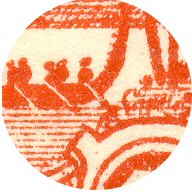
Forgery |
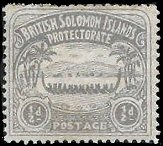 |
 |
 |
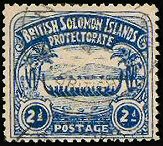 |
 |
 |
 |
 |
Images: Thanks to Sandafayre Stamp Auctions, England; |
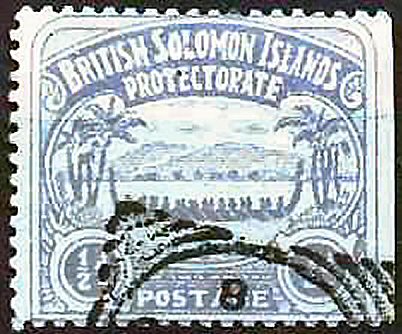
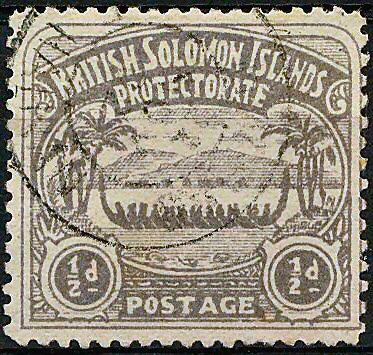




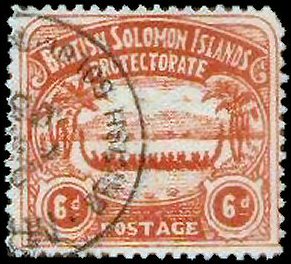

The forgeries are quite common, and buyers should be careful when purchasing any stamps from this issue. Forgeries are often offered as genuine on e-Bay, for example. The forgeries exist both mint and used. Many of the used stamps carry a cancellation from Munia. This is a completely imaginary location. The forger probably selected it by misreading Munda on a map. Vernon also lists a forgery with a forged German colonial mark, "BIET", perhaps part of TOGOGEBIET. As shown below, numerical cancels also exist. |
Here I must correct this original text by Charlie Miller: MUNIA is not an imaginary location but a small island between Alu (Shortland Island) and Fauro Island in the Shortland Islands. Distance to Alu is about 17 Kilometers. The island measures about 1.75 km X 1.2 km and most surely never saw a post office or a c.d.s. |
 A forgery of the 2½d value showing Place mouse on image - "Aore" coll. |
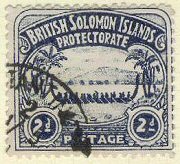
A forgery of the 1d value showing Place mouse on image - "Aore" coll. |
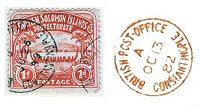 A forgery of the 1d value showing Place mouse on image - "Aore" coll. |



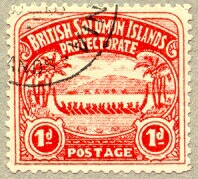
A forgery of the 1d value showing |
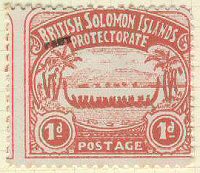 Place mouse on image - "Aore" coll. |
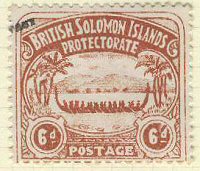
Place mouse on image - "Aore" coll. |
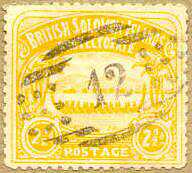
A forgery of the 2½d value showing |


Imperforate singles or blocks of the forgeries are also exist as "proofs". These are not the same as the Unauthorized Reprints. Below are five blocks of these (on thick greyish paper) from the Gibson collection. (place mouse on images) |
 |
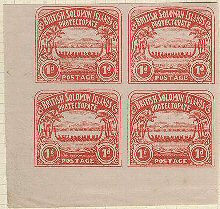 |
 |
 |
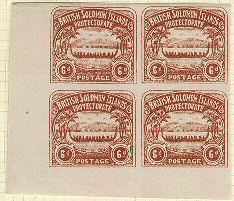 |




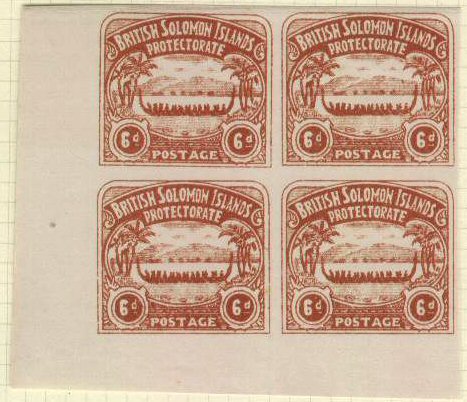
The fact that catalog values of used copies of the Large Canoe issues are higher than for mint copies adds yet another twist to forgeries of the issue. An unscrupulous person can take a mint, no gum copy of one of the stamps, and, simply by adding a cancellation, dramatically increase the value of the item. According to Vernon, the following forged cancellation is known on genuine copies of the Large Canoe Issue: Tulagi, round top to "A", with date NO 23/1908. Additionally, a cancellation TOLAGI was seen on an e-Bay offering. Both of these forgeries could be the first Madame Joseph forgery, even though its usage would not be contemporaneous, since Woodford had reportedly destroyed the remaining stocks of the issue by March 23, 1909. Suitable placement of the cancel on the stamp could obscure the second "9" in "1909", however, and the "8" and "9" are often difficult to distinguish in Large Canoe cancels in any event. Also, the "U" in TULAGI in the Madame Joseph forgery resembles a broken "O". |

Cancel Forged by Madame Joseph |